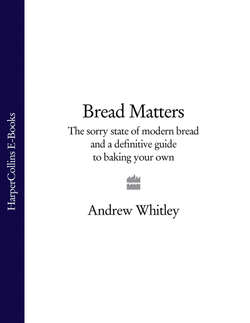Читать книгу Bread Matters: The sorry state of modern bread and a definitive guide to baking your own - Andrew Whitley - Страница 54
Ovens
ОглавлениеMost domestic ovens, whether gas, electric, fan assisted or solid fuel, will bake bread quite adequately. But, not surprisingly, some are better than others. Understanding the way bread bakes will help you adjust your oven’s settings to best effect and perhaps compensate for, or at least forgive, its little foibles.
The big issue when baking bread is whether you do it with applied or retained heat. Most domestic ovens, including the Aga type of range, consist of a steel chamber that is heated by applied energy from a flame, element or furnace. A thermostat controls the flow of heat according to the chosen setting. Once the oven is up to the desired temperature, the flow of heat is reduced. However, the temperature in the oven may have to fall by as much as 30°C before the thermostat calls for renewed heat, so the item being baked is subjected to a constantly oscillating temperature. Cast-iron ranges have more thermal mass built into them than normal domestic ovens and should hold a more even temperature.
The principle of the brick oven is that a mass of masonry retains the energy imparted by the wood (or gas or oil) fire and then radiates, convects and conducts it to the baked object with almost complete evenness. This produces a ‘solid’ bake, where the heat seems to penetrate the bread quicker and more consistently than in applied-heat ovens. Bread that bakes quicker, provided it is baked fully, will retain more internal moisture and so keep a little better, as well as tasting more succulent.
The best aspect of baking in a masonry oven is being able to place the dough directly on to the hot stone. This gives it a terrific thermal kick up the pants and helps to lift the sagging circumference of a freestanding loaf. You can achieve this effect in a conventional domestic oven by using a ‘pizza stone’ or a large unglazed quarry tile. Heat the stone up with the oven and then tip or slide the risen loaf or pizza on to it. You may need to improvise some sort of peel (see above). For the more ambitious retained-heat baker, a company in the USA sells complete ceramic liners designed to fit inside standard domestic ovens (see page 354).
